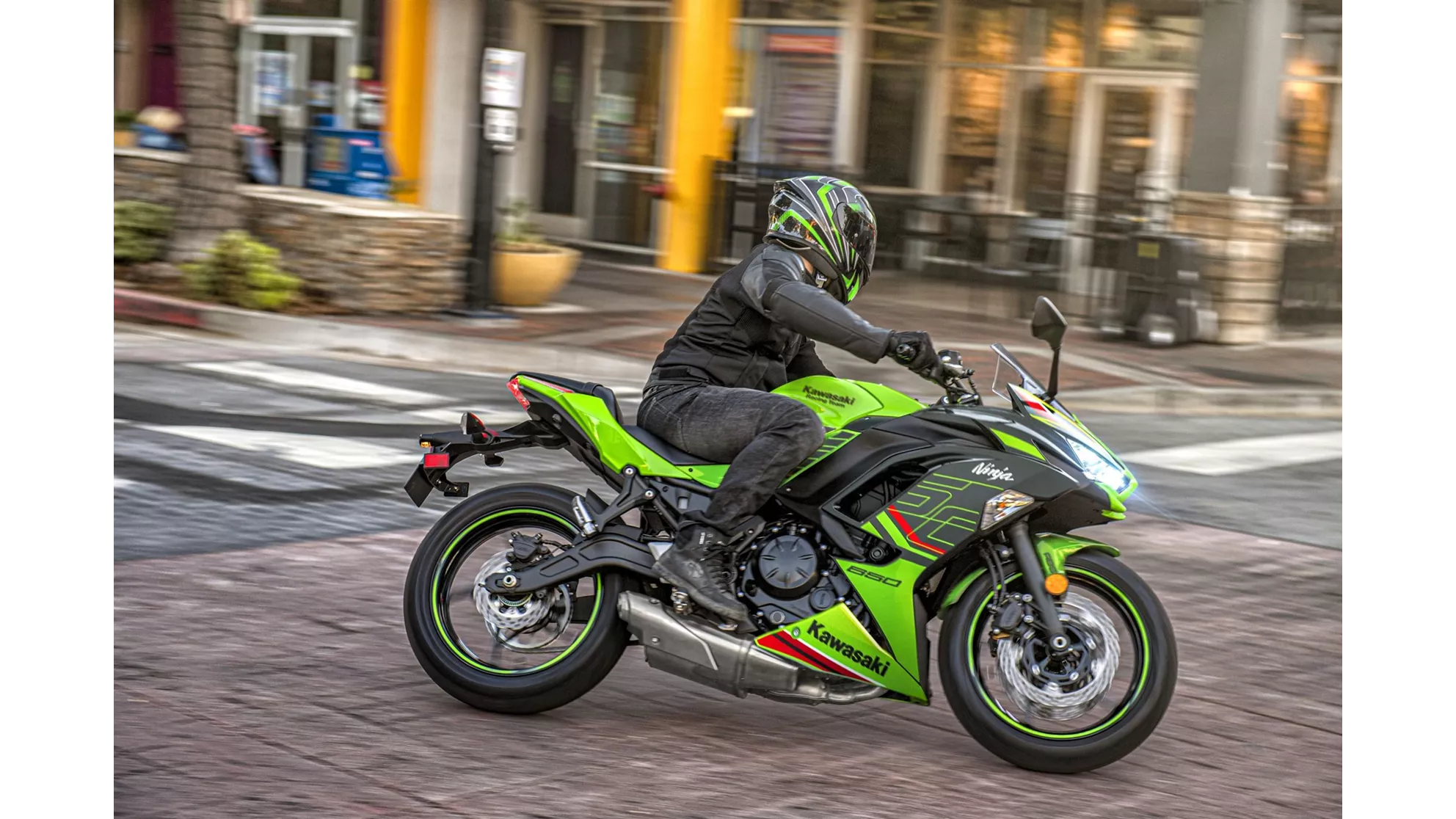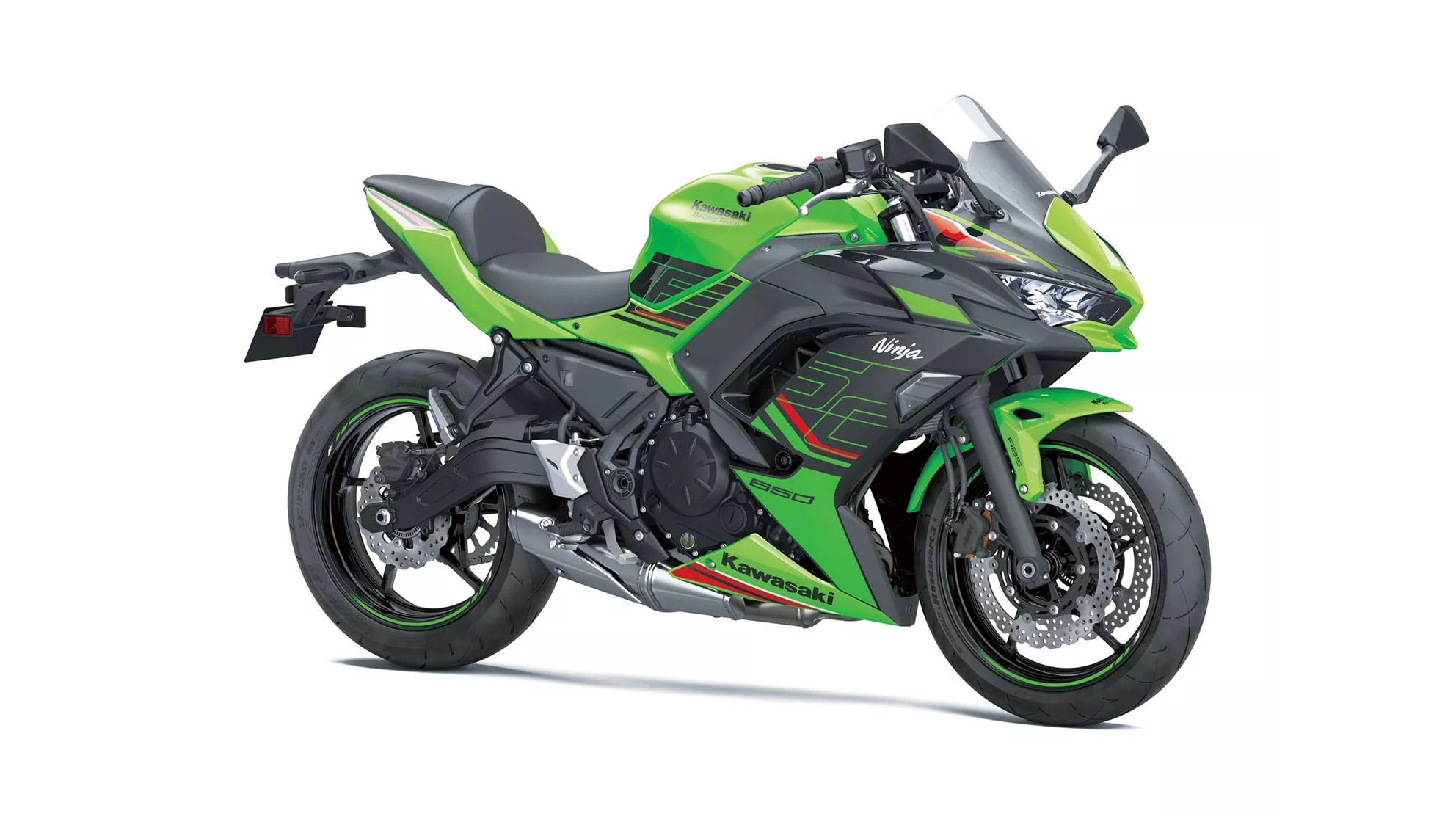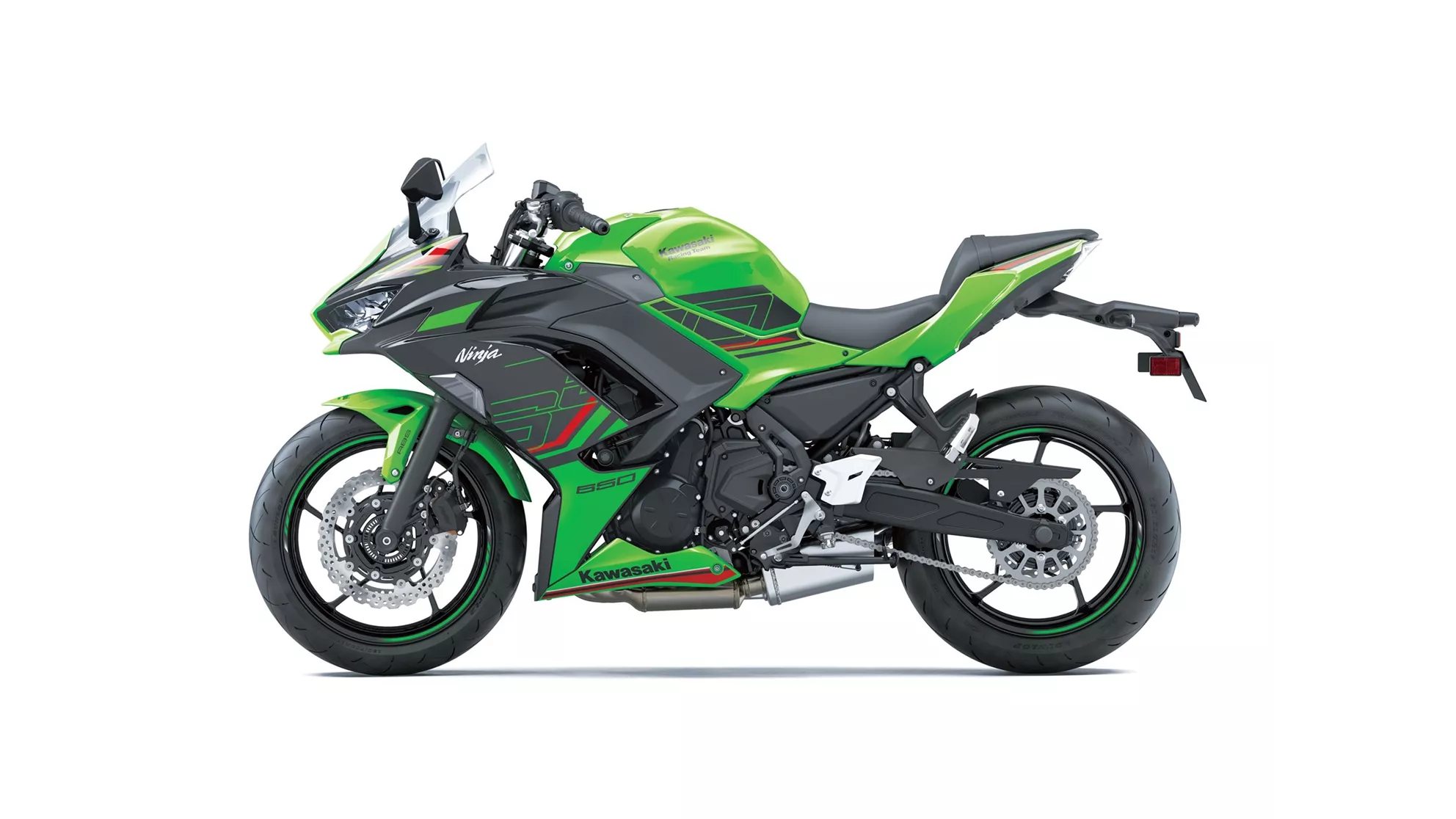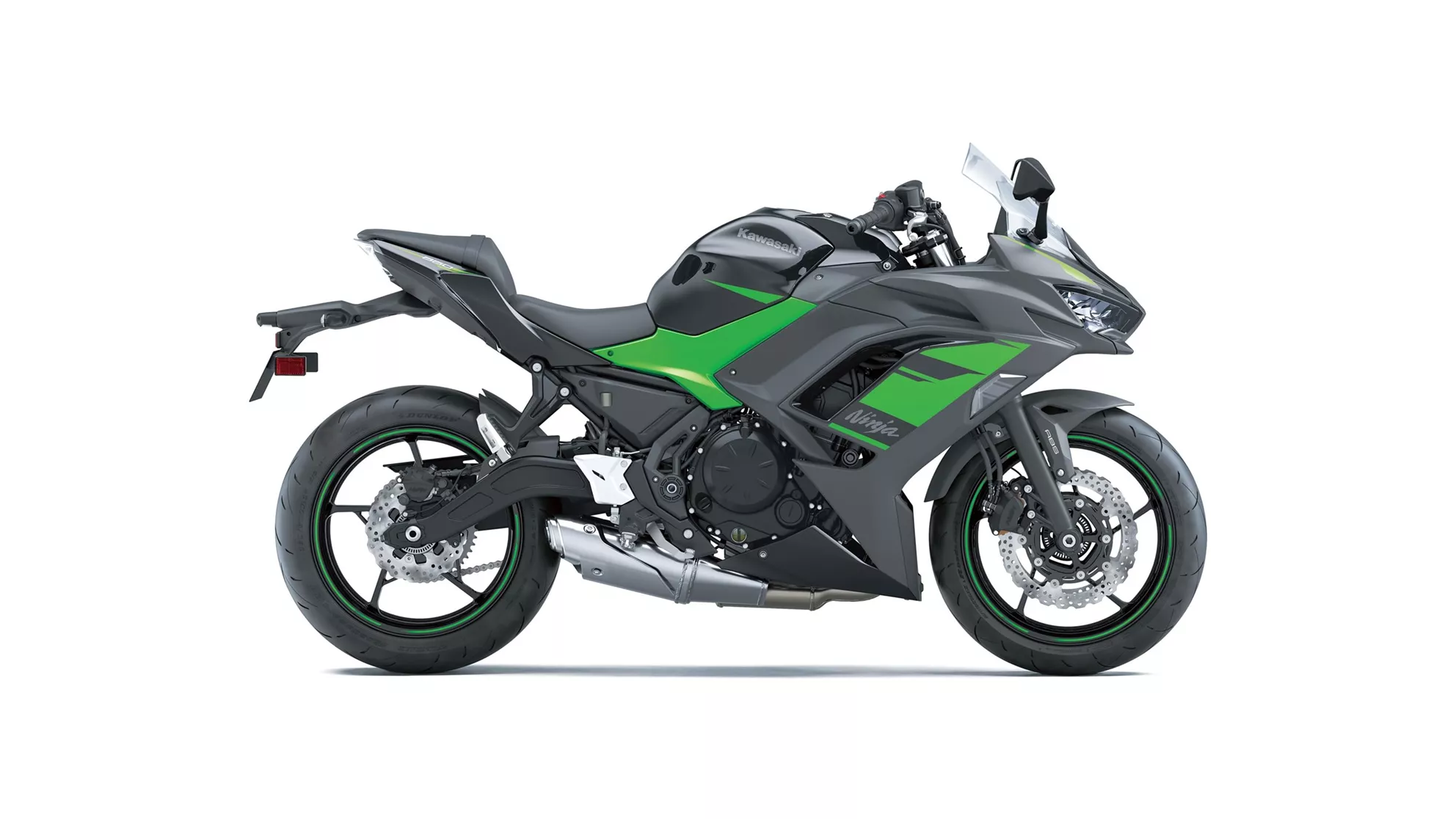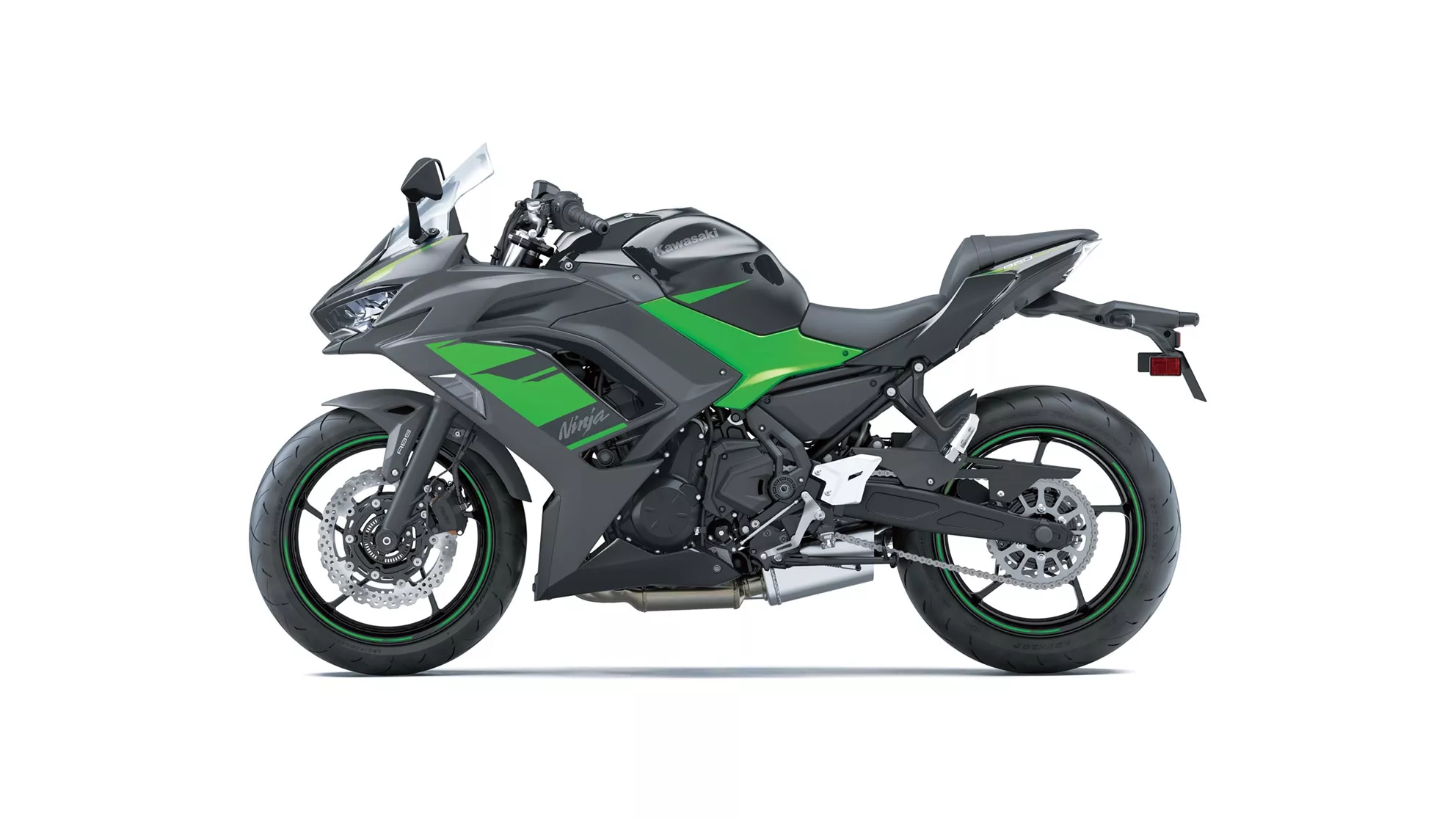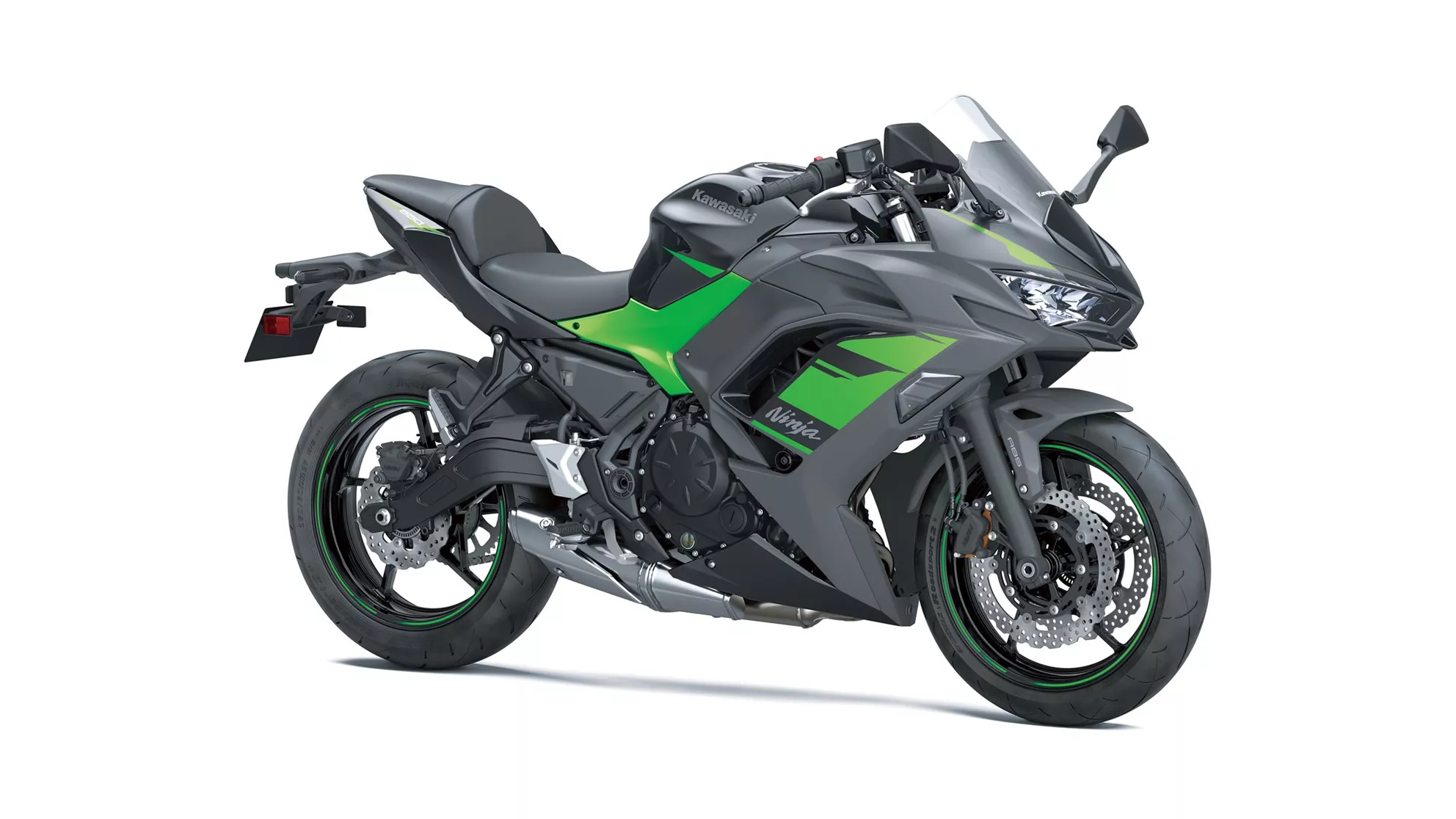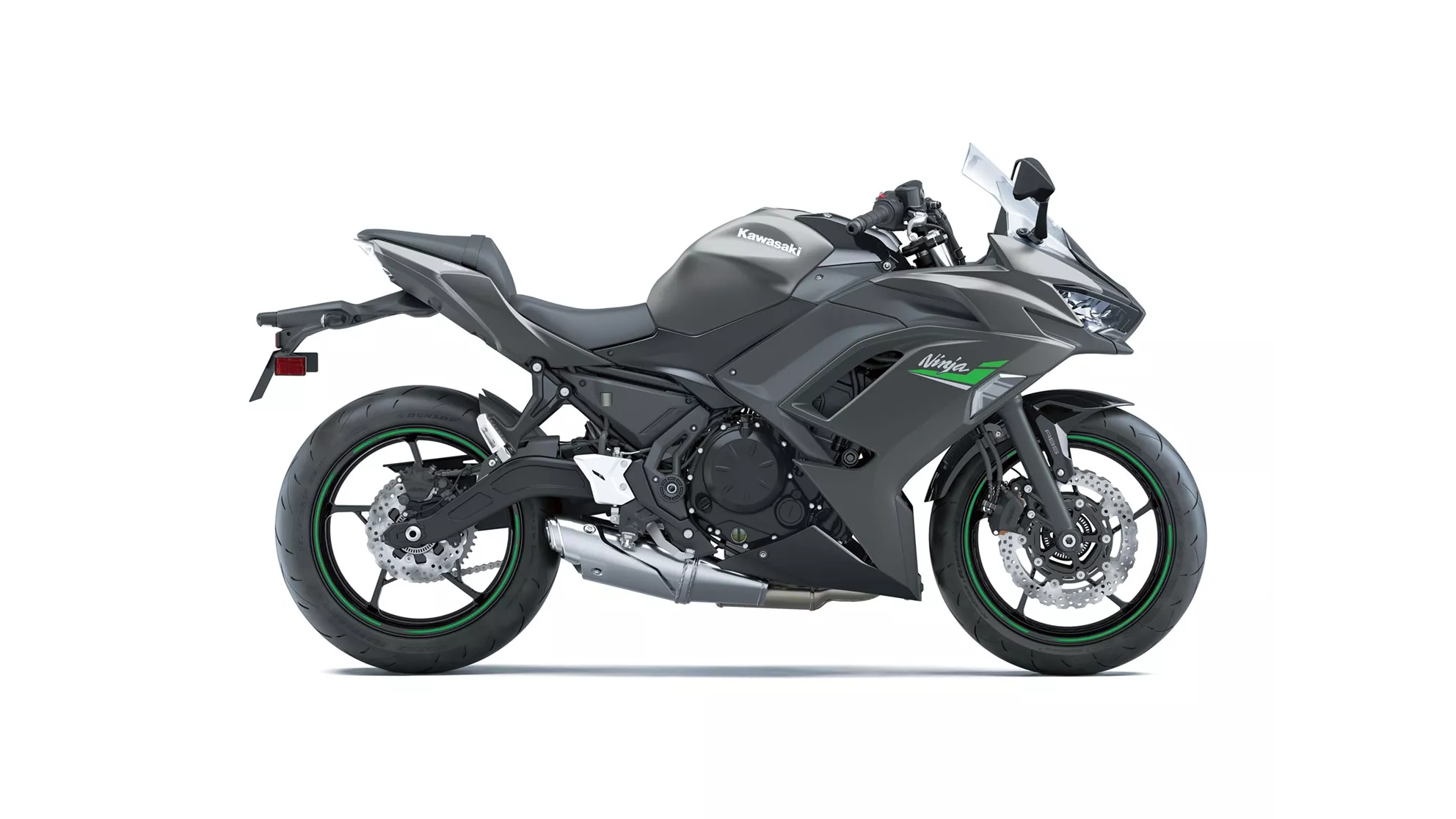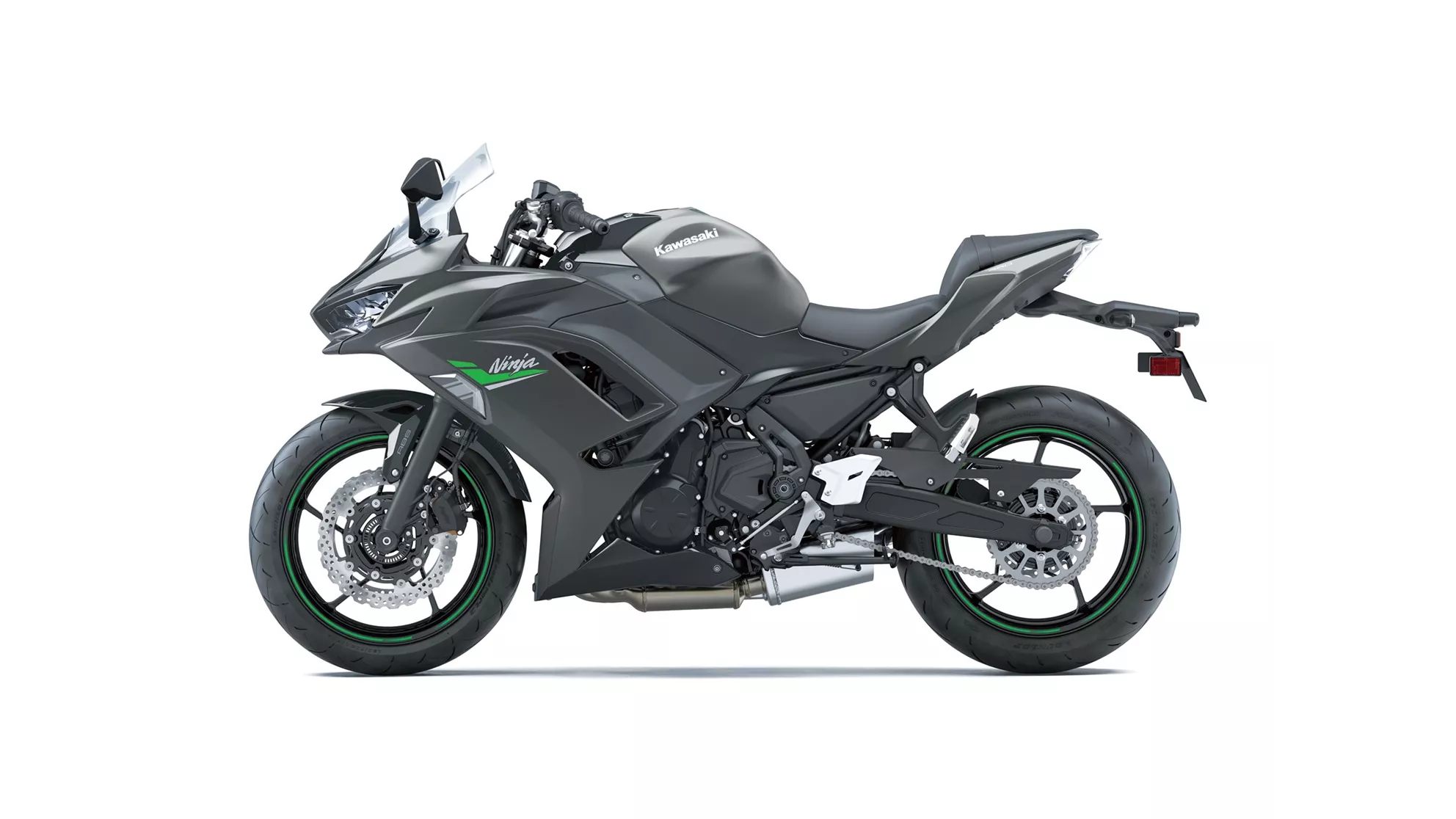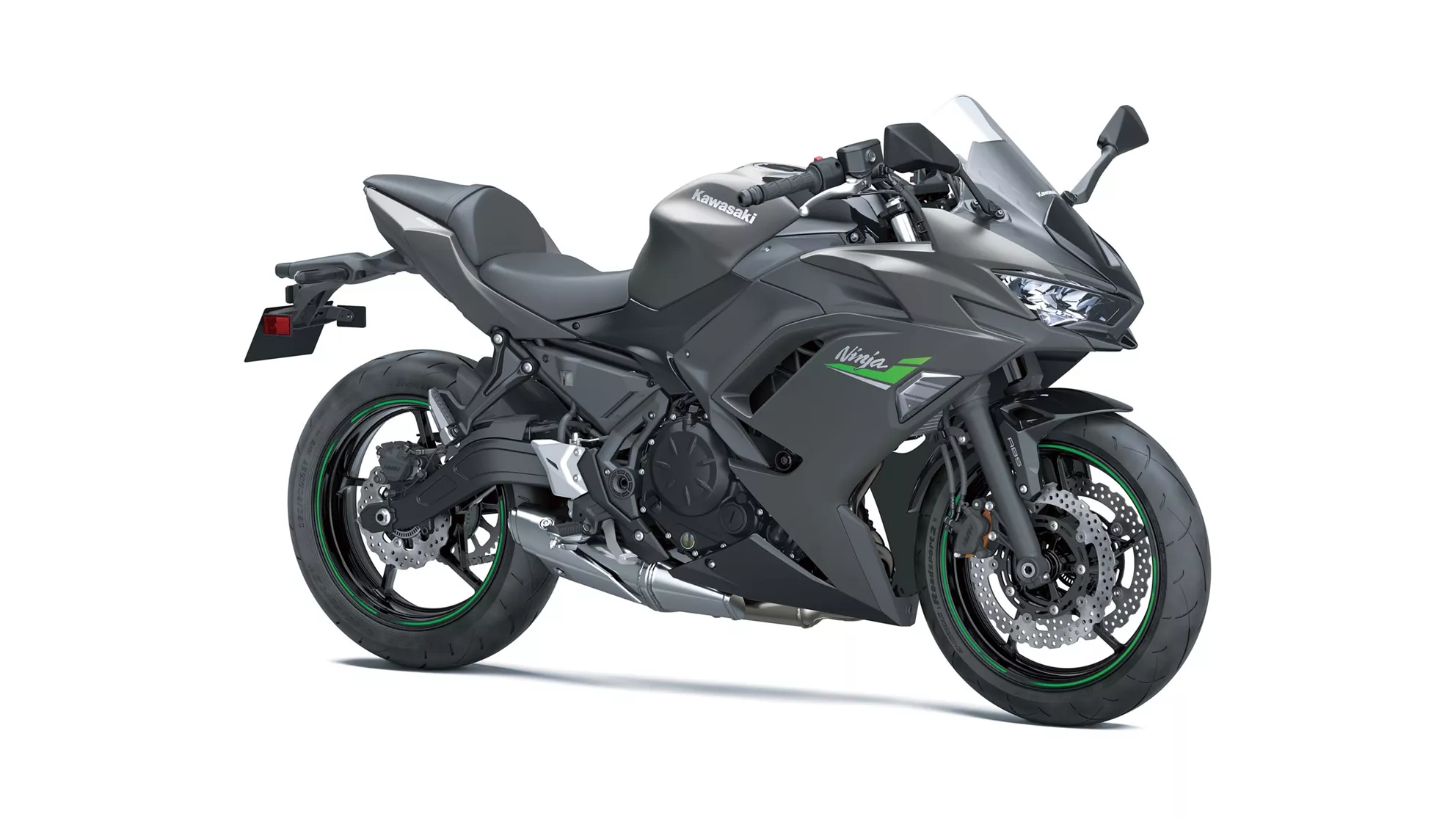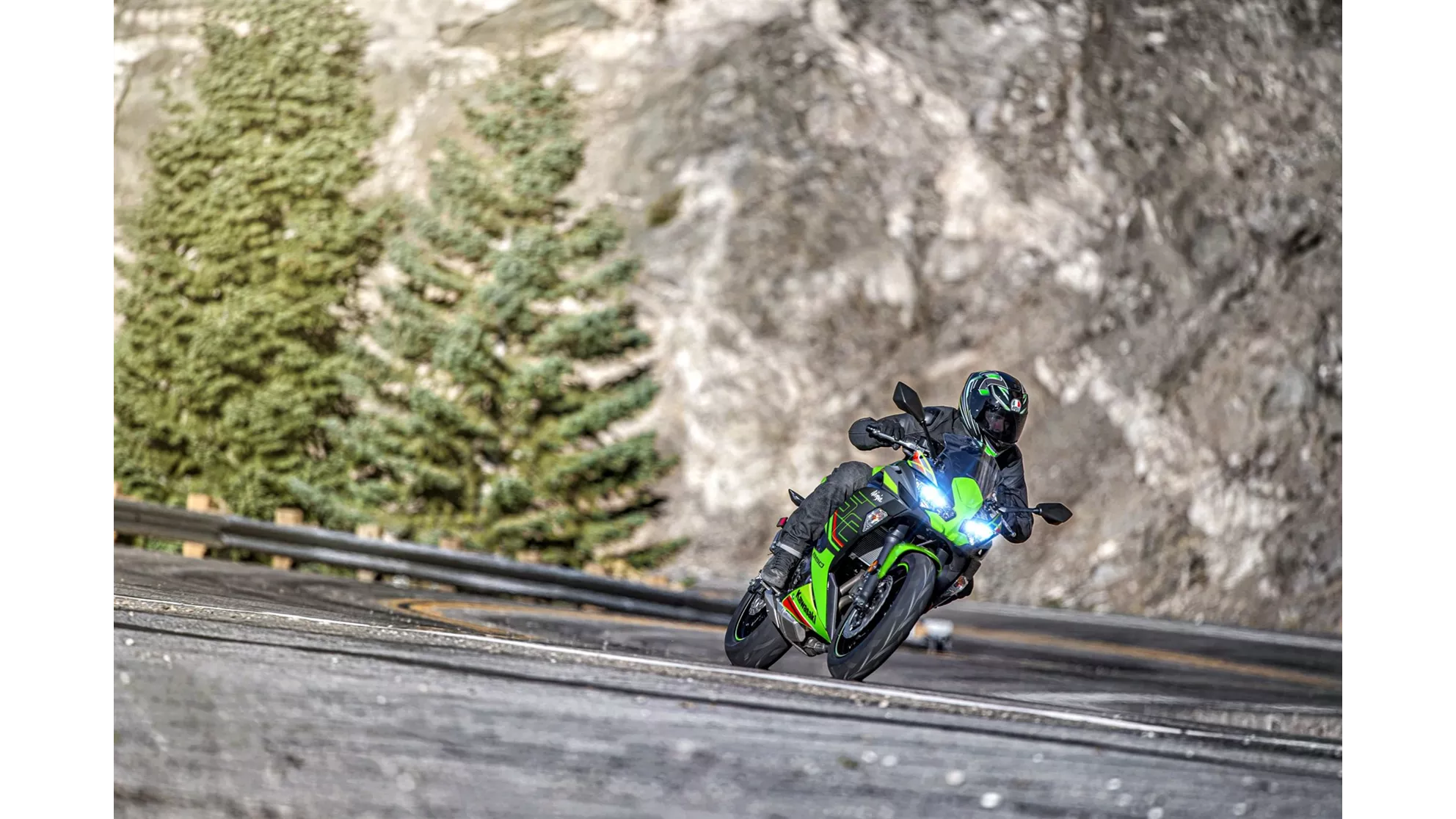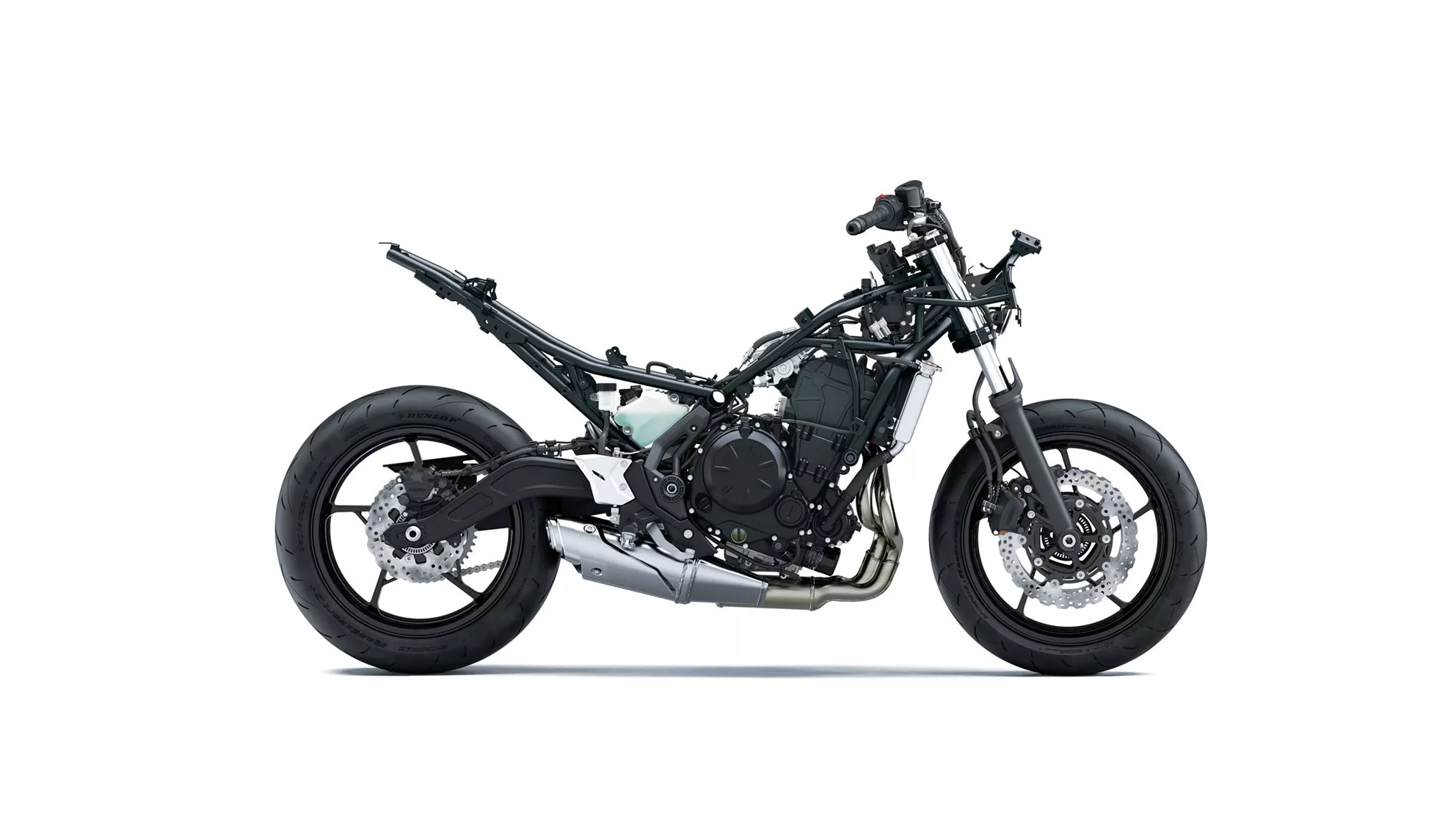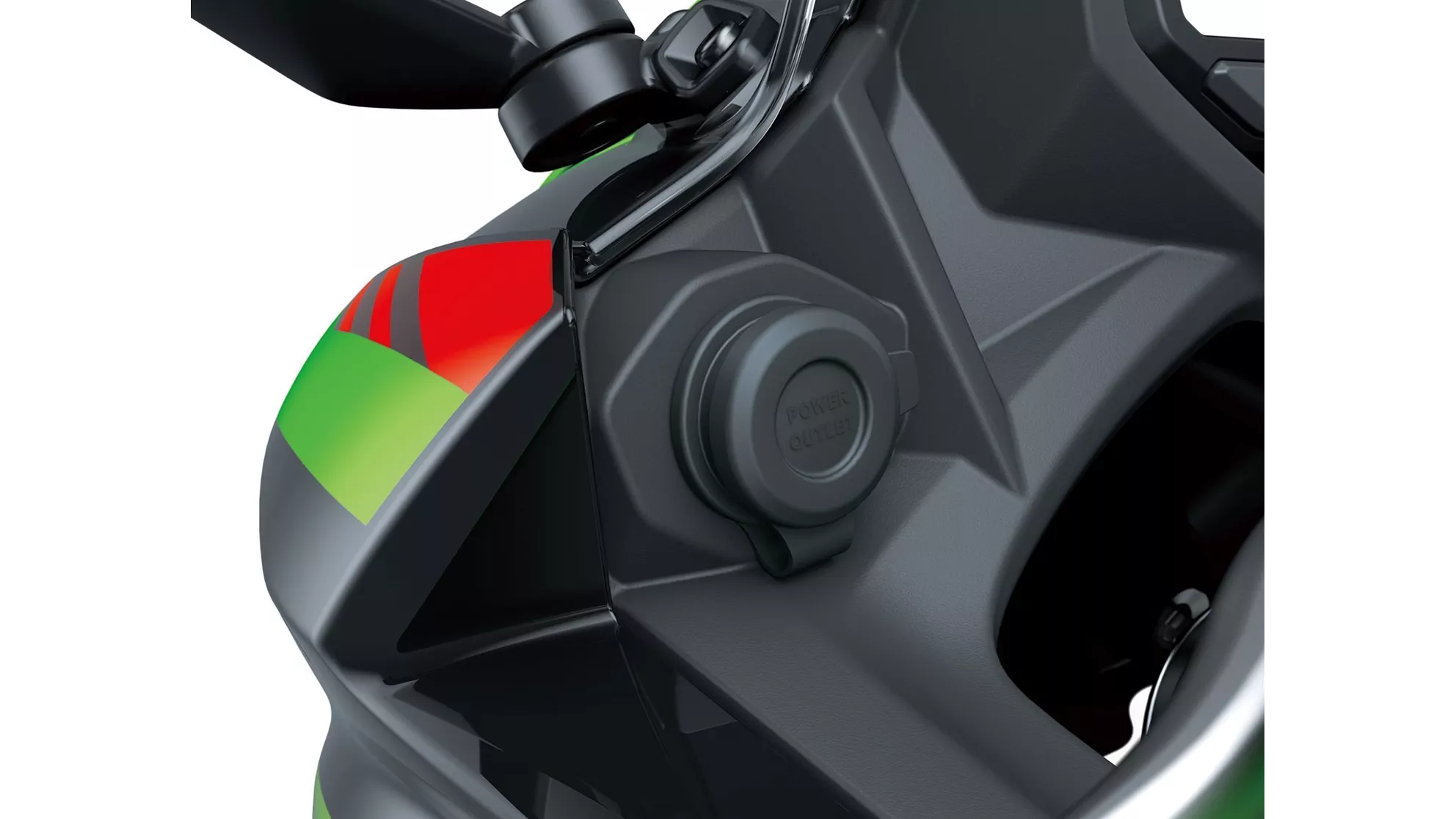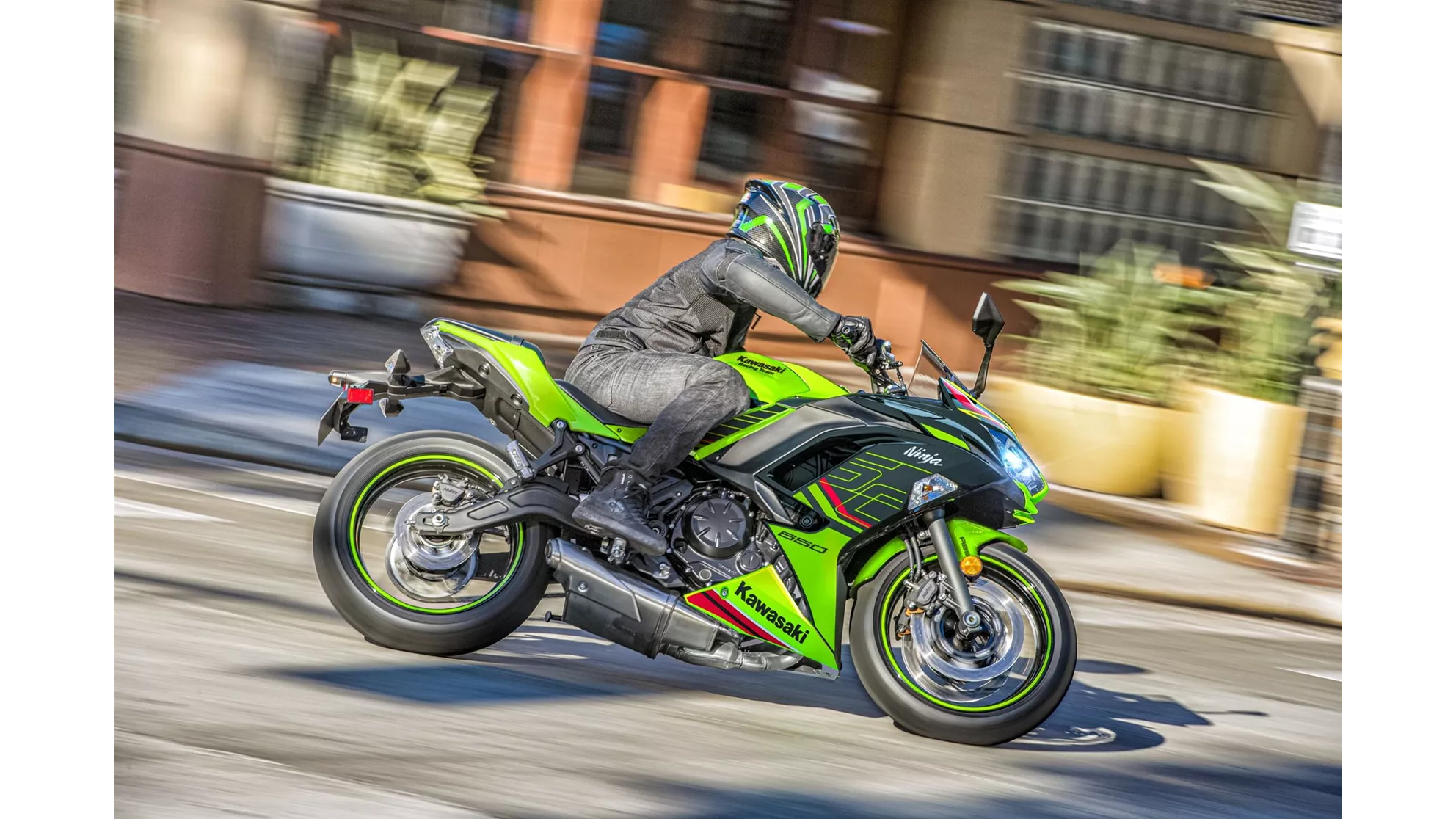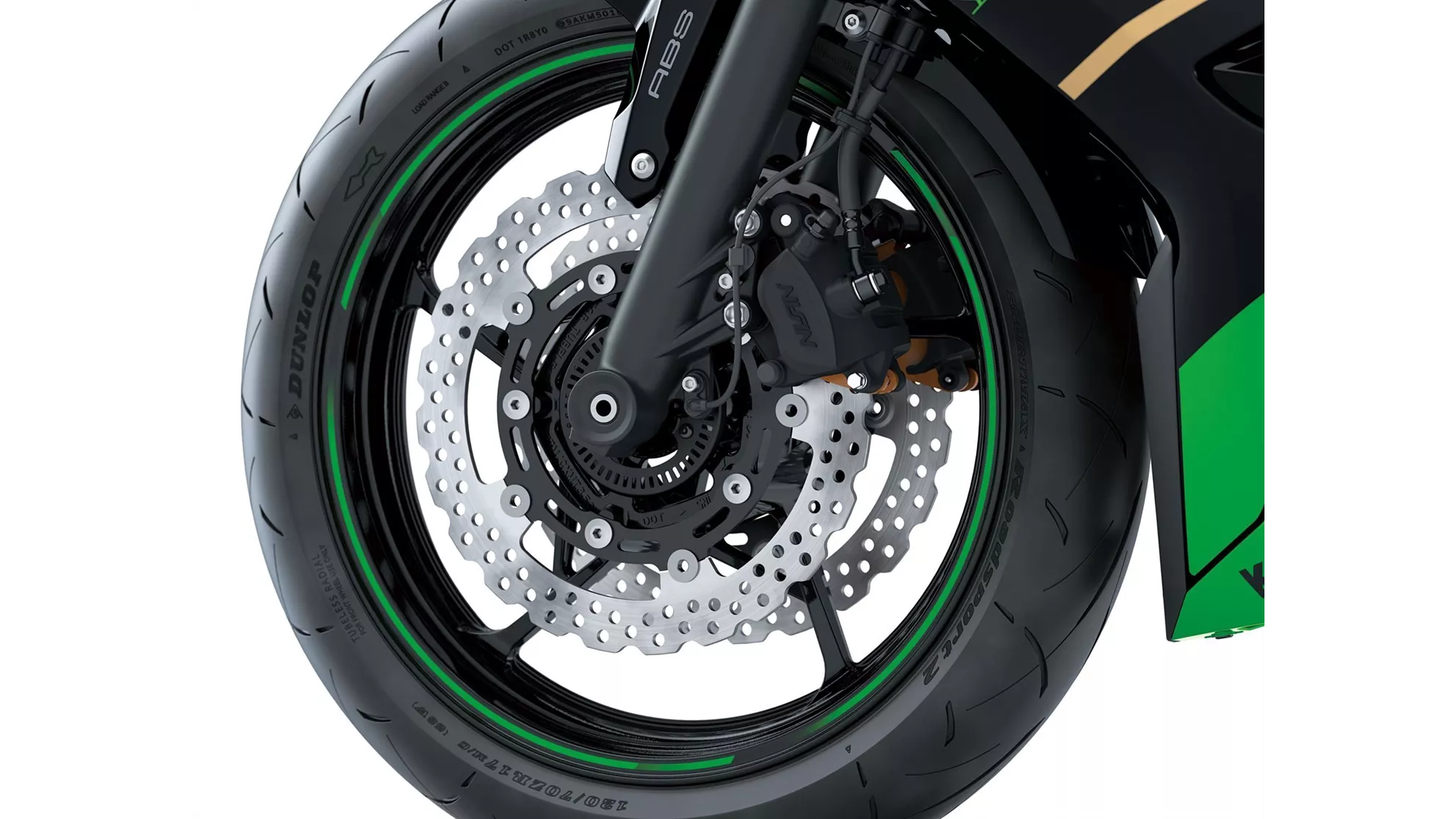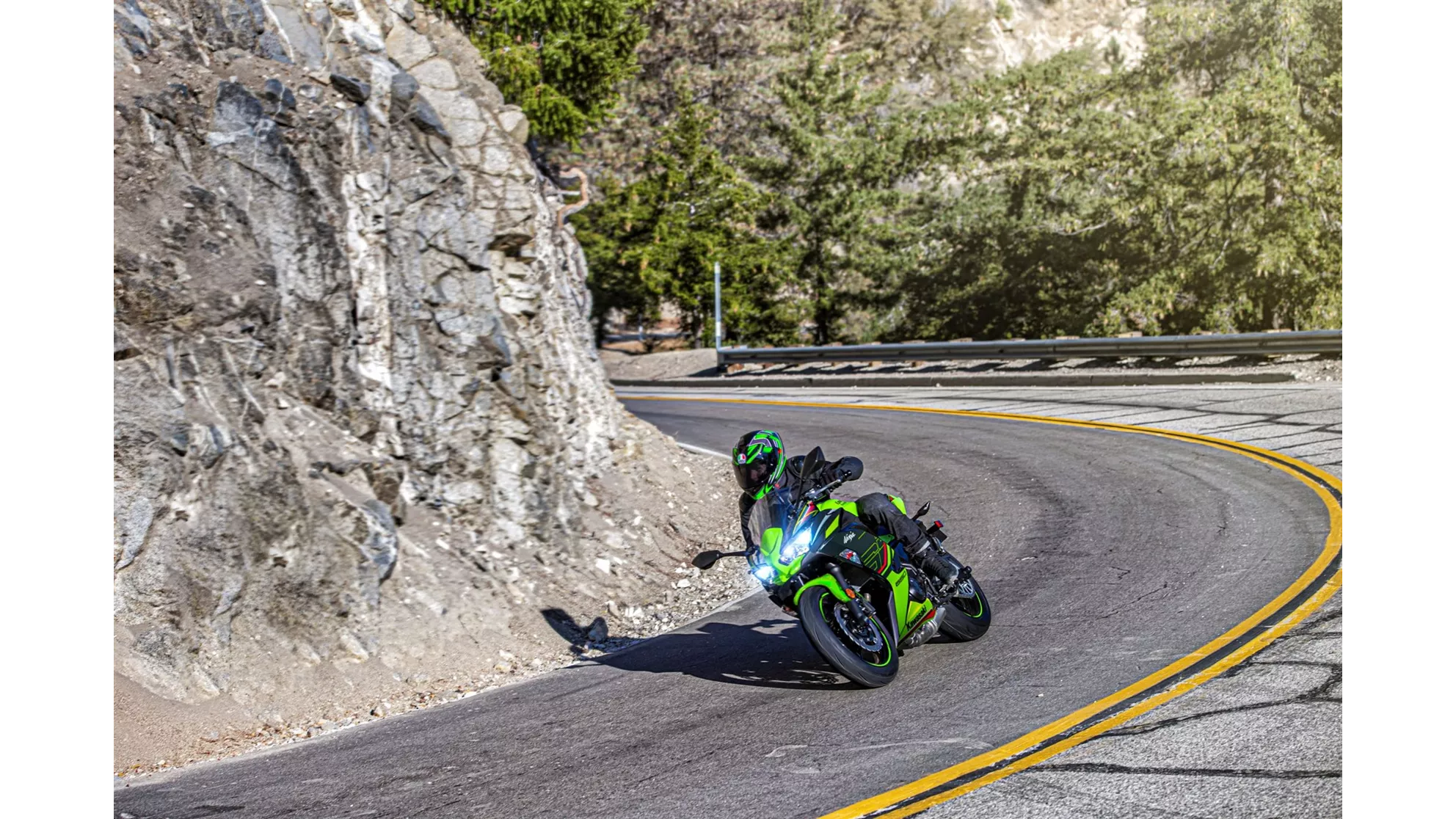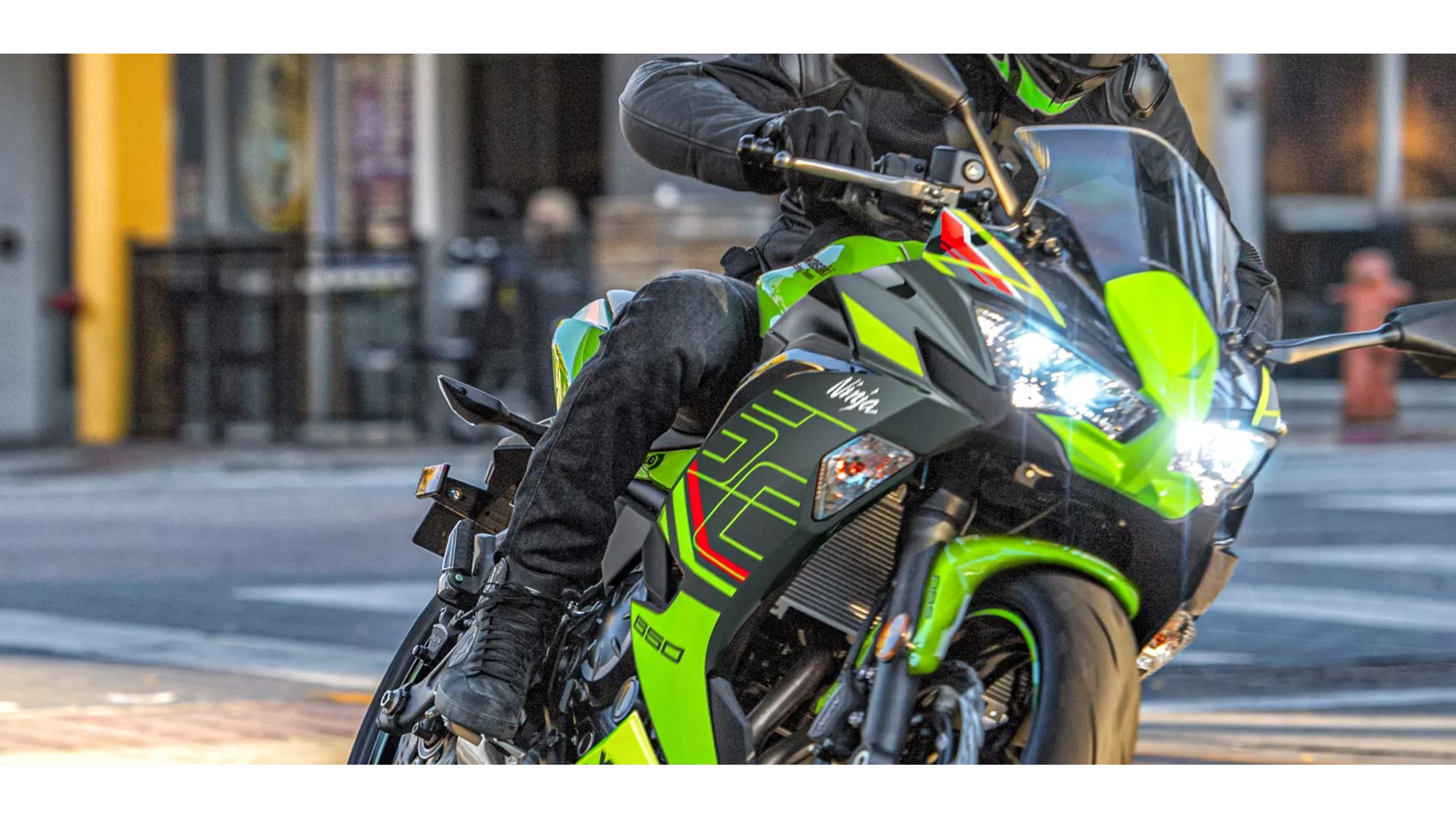The Greens (we're not talking politics here) do a lot of things right, especially with their sporty models (of which Kawasaki has quite a few). They hit the mark visually with their customers. A venomous green, an aggressive headlight design, and a few graphic accents from the WSBK machines make you feel like a true superbiker, even if it's "just" a comparatively everyday-friendly Ninja 650.

Kawasaki Ninja ZX-4RR vs. Ninja 650 Country Road Test 2024
Is the Ninja ZX-4RR as practical as the Ninja 650?
When it comes to supersport looks combined with everyday performance, it's hard to overlook the Kawasaki Ninja 650. With its parallel-twin engine and comfortable seating position, it is the ideal sport bike for daily use and country roads. Can the lively and more radical Ninja ZX-4RR with its ultra-high-revving inline-four really keep up?
&width=72&height=72&bgcolor=rgba_39_42_44_0&mode=crop)
vauli
published on 6/13/2024
The Kawasaki Ninja 650 - more of a sport touring bike than a supersports!
But that's exactly what it's all about; a certain level of comfort should not be missing on an everyday sports bike like the Ninja 650. A true supersports bike, on which you are known to lie more than sit, is simply too uncomfortable for many for daily rides. So, the Ninja 650, compared to its naked bike sister Z650, gets slightly lower handlebars, but a much more efficient fairing, making it less of a supersports bike and more of a sport touring bike, where it excels.
The Kawasaki Ninja ZX-4RR is cut from a completely different cloth
The engine fits this profile perfectly, with its 68.2 HP at 8000 RPM and 65.7 Nm of torque at 7000 RPM, the parallel-twin naturally makes a better figure on the country road than on the race track. And this is exactly where the crucial difference lies compared to the true supersport Ninja ZX-4RR, whose inline-four with just 100 cc per cylinder is cut from a completely different cloth. Several testers have already reported to me about the race track capabilities, and I can perfectly understand that it must be a hell of a lot of fun to wind out this 400 cc rocket to 16,000 (!) RPM on the track.
One might expect the Ninja ZX-4RR to perform like a scooter!
It is astonishing to me how well this green arrow functions even on country roads. 77 horsepower suggests an acceptable performance, but the proud 14,500 RPM at which this power is delivered suggests a completely unusable rev range for country roads. Additionally, the low torque of only 39 Newton meters at an absurdly high 13,000 RPM could make one expect the Ninja ZX-4RR to perform like a moped in the four-digit RPM range! But far from it, the manageable Ninja ZX-4RR revs up almost confidently from the bottom, the electronic engine management does an excellent job and gets the best out of the small displacement. The available rev range is record-breakingly wide anyway, even if one might wish for a bit more grunt at the bottom, it pulls nicely in the middle, really kicks off at around 8000 RPM, and the rubber band doesn't snap until 16,000 RPM!
The Ninja 650 is definitely more comfortable, yet surprisingly, the ZX-4RR offers a lot of comfort too.
- How much does a Kawasaki Ninja 650 cost?
- Here you will find an overview of the price level of new and used motorbikes!
Surprisingly pleasant is also the seating position; the small ZX-4RR is naturally sportily dimensioned, and the Ninja 650 is definitely more comfortable, but for a true supersports bike, it is still exceptionally comfortable. The clip-ons are not mounted quite as low on the fork, so the load on the hands is unexpectedly low, and the pegs are at a height that does not necessarily require the body measurements of a small parade racer.
When it comes to the chassis, the Kawasaki Ninja ZX-4RR scores higher than the Ninja 650.
That both Kawas score very similarly in handling is not really surprising when you consider that both rely on a steel frame, a relatively narrow 160 rear tire, and the Ninja 650 weighs only 4 kilos more than the ZX-4RR, which is actually quite heavy at 189 kilos. However, some of those kilos are excellently invested in a high-quality chassis. While the Ninja 650 relies on a conventional fork without adjustment options at the front and a mono shock with adjustable preload at the rear, the Big Piston USD fork of the Ninja ZX-4RR allows for preload adjustment, and the rear mono shock even allows for rebound, compression, and preload adjustments. Together with the finer responsiveness, this makes the small ZX not only better on the race track but also better on twisty roads when riding spiritedly.
Both brakes behave amicably, but those of the ZX-4RR are of higher quality.
Similarly, the brakes on the ZX-4RR, while not overly large with its dual 290mm discs at the front, are far more effective when combined with the radial four-piston monoblock calipers than the larger 300mm dual discs with two-piston calipers on the Ninja 650. This was to be expected, as the Kawasaki Ninja ZX-4RR is a true supersport, whereas the Ninja 650 only has the look. However, the higher-quality setup of the ZX-4RR is also quite suitable for everyday use, as it can be regulated very precisely.
The electronics on the Kawasaki Ninja 650 are sufficient, but the Ninja ZX-4RR can do more.
Finally, the Ninja ZX-4RR also scores more points in electronics compared to its simpler sibling, the Ninja 650. While the 650 comes well-equipped with ABS, traction control, LED lighting all around, and a TFT color display with connectivity, which are all essential features in this class nowadays, the smaller Ninja ZX-4RR adds even more. In addition to the features mentioned for the Ninja 650, the ZX-4RR boasts four riding modes (Sport, Road, Rain, and Rider), a dedicated race track graphic with special functions for the TFT display, and a delightful quickshifter with a blipper. This, combined with the unparalleled wind-out potential of the 4RR, highlights the sporty soul of this mini-supersports bike.

Ich hätte anhand der Optik nicht geglaubt, dass einerseits die Kawasaki Ninja 650 ein dermaßen guter Sporttourer ist, andererseits aber auch die kleine Ninja ZX-4RR einen so ausgewogenen Komfort bietet. Steige ich von der 4RR-Drehorgel auf die 650er um, tuckert der Reihen-Zweier fast so unaufgeregt wie das Triebwerk eines Traktors. Das ist aber kein Nachteil, denn das insgesamt alltagstauglichere Konzept ist nach wie vor die Ninja 650. Da es die im Vergleich mit der 650er fast schon als Hightech-Rakete zu bezeichnende Ninja ZX-4RR aber schafft, den Spagat zwischen Sport und Alltag erstaunlich gut zu meistern, ist sie trotz des um etwas mehr als 1500 Euro höheren Preises meine Favoritin - einfach die klassische Siegerin der Herzen!
- How much does a Kawasaki Ninja ZX-4RR cost?
- Here you will find an overview of the price level of new and used motorbikes!
&width=60&height=60&bgcolor=rgba_39_42_44_0&mode=crop)
Kawasaki Ninja 650 2024 - Experiences and Expert Review
vauli
Evaluating the Kawasaki Ninja 650 solely based on its specifications on paper does not do justice to its potential. The engine is clearly not a power-packed race track beast, but rather an agile yet tame companion. The sport touring bike with its supersport appearance accomplishes exactly what it is supposed to and presents itself as a genuine alternative in its class, thanks in part to its adequate electronics package including traction control. However, hobby racers should be warned that the "Ninja" name still stirs certain sporty expectations that a Ninja 650 cannot fully meet.
&width=60&height=60&bgcolor=rgba_39_42_44_0&mode=crop)
Kawasaki Ninja ZX-4RR 2024 - Experiences and Expert Review
vauli
The mere fact that the Kawa Ninja ZX-4RR, with its high-revving inline-four engine in a bonsai format, has no real competition makes it absolutely unique. The engine is also its absolute flagship, with a rev limit at 16,000 RPM that makes you addicted to winding out! The chassis, brakes, and electronics are at a high level, and what's more surprising is its pronounced everyday usability despite all its sportiness - the seating position is not as radical as on other supersports.
More from 1000PS Magazine
Kawasaki Ninja ZX-4RR vs. Ninja 650 Country Road Test 2024 Images
Source: 1000PS

Kawasaki Ninja ZX-4RR 2024

Kawasaki Ninja 650 2024

Kawasaki Ninja ZX-4RR 2024

Kawasaki Ninja 650 2024

Kawasaki Ninja ZX-4RR 2024

Kawasaki Ninja 650 2024

Kawasaki Ninja ZX-4RR 2024

Kawasaki Ninja 650 2024

Kawasaki Ninja ZX-4RR 2024

Kawasaki Ninja 650 2024

Kawasaki Ninja ZX-4RR 2024

Kawasaki Ninja 650 2024

Kawasaki Ninja ZX-4RR 2024

Kawasaki Ninja 650 2024

Kawasaki Ninja ZX-4RR 2024

Kawasaki Ninja 650 2024

Kawasaki Ninja ZX-4RR 2024

Kawasaki Ninja 650 2024

Kawasaki Ninja ZX-4RR 2024

Kawasaki Ninja 650 2024

Kawasaki Ninja ZX-4RR 2024

Kawasaki Ninja 650 2024

Kawasaki Ninja ZX-4RR 2024

Kawasaki Ninja 650 2024

Kawasaki Ninja ZX-4RR 2024

Kawasaki Ninja 650 2024

Kawasaki Ninja ZX-4RR 2024

Kawasaki Ninja 650 2024

Kawasaki Ninja ZX-4RR 2024

Kawasaki Ninja 650 2024

Kawasaki Ninja ZX-4RR 2024

Kawasaki Ninja 650 2024

Kawasaki Ninja ZX-4RR 2024

Kawasaki Ninja 650 2024

Kawasaki Ninja ZX-4RR 2024

Kawasaki Ninja ZX-4RR 2024

Kawasaki Ninja ZX-4RR 2024

Kawasaki Ninja ZX-4RR 2024

Kawasaki Ninja ZX-4RR 2024

Kawasaki Ninja ZX-4RR 2024

Kawasaki Ninja ZX-4RR 2024

Kawasaki Ninja ZX-4RR 2024

Kawasaki Ninja ZX-4RR 2024

Kawasaki Ninja ZX-4RR 2024

Kawasaki Ninja ZX-4RR 2024

Kawasaki Ninja ZX-4RR 2024

Kawasaki Ninja ZX-4RR 2024

Kawasaki Ninja ZX-4RR 2024

Kawasaki Ninja ZX-4RR 2024

Kawasaki Ninja ZX-4RR 2024

Kawasaki Ninja ZX-4RR 2024

Kawasaki Ninja ZX-4RR 2024

Kawasaki Ninja ZX-4RR 2024

Kawasaki Ninja ZX-4RR 2024

Kawasaki Ninja ZX-4RR 2024

Kawasaki Ninja ZX-4RR 2024

Kawasaki Ninja ZX-4RR 2024


